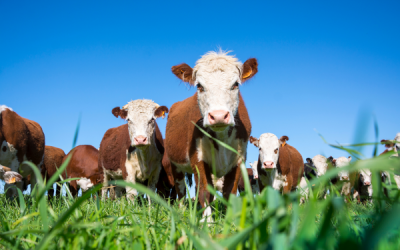Although bird flu is a perennial concern among poultry producers nationwide, the 2024 bird flu outbreak has presented its own challenges when it started hopping species.
Perhaps most concerning has been the rate of infection among dairy cattle. Since the disease started infecting cattle back in March, around 200 herds have been infected.
By the numbers: Thirteen states have confirmed infected dairy herds, but some states have been hit harder than others, especially Texas, Colorado, Idaho, and Michigan.
Two hundred herds may or may not sound like a lot of cattle, but consider this: recent data shows that 17% of all U.S. dairy products contain inactive bird flu virus.
That’s one in six dairy products.
Although this is not a human health concern (as noted by no live virus samples found in consumer dairy products), this statistic highlights how widespread the problem has become.
And this: Even more concerning is the fact that even humans have been infected. Over a dozen farm workers have acquired the disease, and although symptoms were fairly mild, poultry factories have shut down to contain the spread, and dairies have had to take precautions.
Yet the USDA says the problem is likely worse than it looks. Many dairies aren’t testing herds and workers, so the disease is probably more widespread than the data shows. Even 4-H fairs have had to shut down dairy and poultry shows in order to contain the issue.
Where this goes: As producers and agencies work to get a handle on the situation, one thing is clear—pasteurization is doing its job. So drink your milk and slap on another layer of butter… your food is perfectly safe.
“Under the Canopy!”: the Asian Copperleaf
There’s a new weed in town, and Iowa farmers aren’t feeling cool about it in the least bit....
Cattlemen’s Beef with Google
Google’s planned sustainability search has cowboys calling foul for false information. Google is...
AgriWebb Captures $6.7M
"Home, home on the range. Where an app tracks cattle gains and the best places to graze..."...




